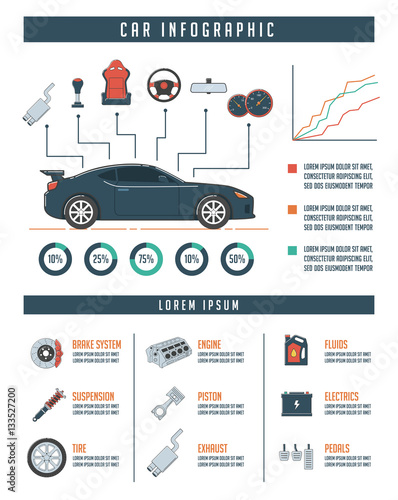When it involves your vehicle's brake system, recognizing typical problems can conserve you from prospective safety and security risks. From recognizing brake pad wear to dealing with brake liquid leakages, knowing how to take on these troubles is essential. But what concerning those spongy brake pedals? There's a repair for that also. Stay tuned to get more information concerning these problems and the practical options that can maintain you securely when traveling.
Brake Pad Use and Replacement
When it pertains to maintaining your lorry's brake system, one essential aspect to watch on is the wear and replacement of brake pads. Brake pads are crucial parts that press against the brake rotors to slow down or quit your automobile. Gradually, these pads wear down as a result of rubbing, needing normal inspection and substitute to ensure your brakes function successfully.
To identify if your brake pads require substitute, listen for shrieking or grinding noises when you use the brakes. Furthermore, if your vehicle takes longer to stop or you see vibrations or pulsations when stopping, it might be time to replace the brake pads.
Disregarding used brake pads can cause decreased braking efficiency, damages to various other brake elements, and even brake failure.
Changing brake pads is a fairly uncomplicated process for lots of cars. Nevertheless, if you're unclear or unpleasant performing this job, it's ideal to seek advice from a specialist mechanic to ensure proper installation and optimum brake performance.
Frequently examining and replacing https://www.localmemphis.com/article/money/memphis-auto-repair-any-more-cars-august/522-0e844f67-891f-4107-b3fc-08ffc18955d1 is vital for your safety and security and the longevity of your vehicle's stopping system.
Brake Liquid Leaks and Upkeep
To ensure your automobile's brake system operates ideally, it is necessary to likewise take note of brake liquid leakages and maintenance. https://oilchangenearme17284.theisblog.com/29476688/the-complete-guide-to-automobile-outlining-important-steps-for-a-remarkable-display-room-look is essential for transferring the force from your foot on the brake pedal to the real stopping device. One common problem with brake fluid is leakages, which can happen because of worn-out brake lines, seals, or links. If you observe a puddle or drips under your automobile, it's vital to attend to the leakage immediately to stop a potential brake failure.
Consistently checking your brake fluid degree is key to keeping your brake system. Reduced brake liquid can bring about air going into the brake lines, which compromises braking performance.
Additionally, https://air-lift-performance17394.blue-blogs.com/35914525/strap-in-as-we-venture-into-the-future-of-auto-mechanics-where-innovative-fads-are-improving-the-industry-plan-for-an-exciting-journey or infected brake liquid can influence the total effectiveness of your brakes. It's suggested to follow the producer's standards on when to alter the brake liquid, typically every 2 years.
Spongy Brake Pedal: Bleeding Brakes
If you have actually ever before experienced a spongy brake pedal while driving, you comprehend the significance of preserving a firm and responsive stopping system. One usual reason for a mushy brake pedal is air caught in the brake lines. When air goes into the brake system, it can result in a loss of hydraulic pressure, leading to that unsettling mushy sensation when you press the brake pedal.
To solve this issue, bleeding the brakes is essential. Hemorrhaging the brakes includes removing the air from the brake lines to bring back appropriate hydraulic pressure.
To hemorrhage the brakes, you'll require an assistant to assist you. Begin by situating the brake bleeder shutoff on each wheel, usually located near the brake caliper. With a wrench, loosen the shutoff and have your helper press the brake pedal while you observe any kind of air bubbles coming out. Repeat this process for each wheel, beginning with the wheel farthest from the master cyndrical tube and moving more detailed.
Once you no longer see air bubbles and just clear fluid arises, tighten up the shutoff and top up the brake liquid reservoir as required. Hemorrhaging the brakes assists ensure a company brake pedal and boosts total stopping efficiency.
Final thought
Since you understand common brake issues and exactly how to fix them, you can guarantee your vehicle's security and performance. Keep in mind to listen for warning signs like screeching sounds or mushy brake pedals, and resolve them immediately. Regular upkeep and timely substitutes are key to maintaining your brakes in top condition. Keep proactive and attentive to your brake system to appreciate risk-free and trustworthy driving experiences.
